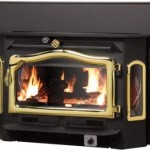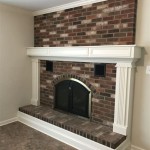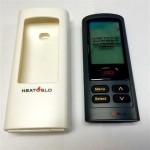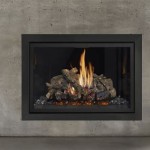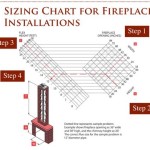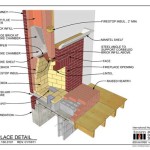Antique Gas Fireplace Insert: Blending Historic Charm with Modern Convenience
The allure of a fireplace is timeless. For centuries, fireplaces have served as central gathering points, providing warmth, light, and a comforting ambiance. While traditional wood-burning fireplaces offer a certain rustic appeal, they also present challenges such as sourcing and storing firewood, managing smoke, and maintaining cleanliness. Antique gas fireplace inserts provide an alternative, offering the visual charm of an antique fireplace with the ease and efficiency of modern gas technology. These inserts offer a way to enjoy the aesthetic benefits of historical design without the inherent drawbacks of burning wood.
An antique gas fireplace insert is essentially a self-contained unit designed to fit within the existing firebox of a traditional fireplace. They typically feature meticulously crafted facades that mimic the appearance of historical fireplaces, often incorporating intricate detailing, cast iron, or ornate metalwork. The gas component allows for instant ignition, adjustable flame heights, and cleaner burning compared to wood. This combination of historical aesthetics and modern functionality makes antique gas fireplace inserts an appealing option for homeowners seeking a blend of style and practicality.
Key Features to Consider When Selecting an Antique Gas Fireplace Insert
Choosing the right antique gas fireplace insert involves careful consideration of several factors to ensure it meets both aesthetic preferences and functional needs. Beyond the visual appeal, aspects like heating capacity, efficiency, and safety features are paramount. Understanding these features will aid in making an informed decision.
1. Heating Capacity and Efficiency: The primary function of a fireplace insert remains to provide supplemental heat. Heating capacity is measured in British Thermal Units (BTUs) and indicates the amount of heat the insert can generate per hour. The selection of an appropriate BTU rating depends on the size of the room intended to be heated and the level of supplemental heating desired. A smaller room will require a lower BTU rating, while a larger space will benefit from a higher BTU output. Efficiency refers to how effectively the insert converts gas into usable heat. Higher efficiency ratings translate to lower fuel consumption and reduced energy costs. Look for inserts with high Annual Fuel Utilization Efficiency (AFUE) ratings for optimal performance. Venting options also contribute to efficiency. Direct vent inserts, for example, draw combustion air from outside and vent exhaust gases directly outdoors, preserving indoor air quality and improving heating efficiency.
2. Aesthetic Authenticity and Design: The key appeal of an antique gas fireplace insert lies in its ability to replicate the look and feel of a traditional fireplace. Consider the level of detail and craftsmanship present in the insert's facade. Features like realistic log sets, ember beds, and flame patterns contribute to the overall authenticity. Materials used in the construction of the insert also play a crucial role. Cast iron, for example, offers a durable and historically accurate aesthetic. The style of the insert should complement the overall design of the room. Whether the room is decorated in a Victorian, Edwardian, or other period style, the insert should seamlessly integrate with the existing décor. Some manufacturers offer custom design options, allowing homeowners to tailor the insert to their specific aesthetic requirements.
3. Safety Features and Compliance: Gas appliances require adherence to strict safety standards to ensure safe operation. Look for inserts that are certified by recognized testing organizations such as CSA or UL. These certifications indicate that the insert has been tested and meets established safety requirements. Features such as oxygen depletion sensors (ODS) are essential for preventing carbon monoxide poisoning. ODS systems automatically shut off the gas supply if oxygen levels in the room become too low. Other safety features to consider include safety screens to prevent accidental contact with the hot glass and automatic shut-off mechanisms in case of malfunction. Proper installation is crucial for ensuring safe operation. It is recommended to hire a qualified and licensed technician to install the gas fireplace insert to ensure compliance with local building codes and safety regulations.
Considerations for Installing an Antique Gas Fireplace Insert
The installation of an antique gas fireplace insert is a process that requires careful planning and professional execution. Proper installation is critical not only for safety but also for ensuring the optimal performance and longevity of the insert. Ignoring critical installation steps could lead to dangerous situations and reduce the efficiency of the fireplace.
1. Chimney Inspection and Preparation: Before installing a gas fireplace insert, the existing chimney must be thoroughly inspected for any signs of damage or deterioration. Cracks, loose bricks, or other structural issues can compromise the safety and functionality of the chimney. A professional chimney sweep should clean and inspect the chimney to ensure it is free of obstructions and creosote buildup. Depending on the type of gas fireplace insert selected, a chimney liner may be required. Liners are installed within the existing chimney to provide a dedicated flue for venting combustion gases. This is particularly important for older chimneys that may not be compatible with modern gas appliances. The chimney liner must be properly sized and installed to ensure proper venting and prevent the buildup of dangerous gases.
2. Gas Line Connection and Venting: Connecting the gas fireplace insert to the existing gas line requires careful attention to detail and adherence to local building codes. A qualified gas fitter should perform the gas line connection to ensure it is properly sealed and leak-free. The gas line should be sized appropriately to provide adequate gas flow to the insert. Proper venting is essential for removing combustion gases from the building. The type of venting required will depend on the type of gas fireplace insert selected. Direct vent inserts require a sealed venting system that draws combustion air from outside and vents exhaust gases directly outdoors. Vent-free inserts do not require venting, but they are subject to stricter regulations and require careful consideration of indoor air quality.
3. Professional Installation and Inspection: Due to the complexity and potential hazards involved, it is strongly recommended to hire a qualified and licensed professional to install the antique gas fireplace insert. A professional installer will have the knowledge, experience, and tools necessary to ensure the installation is performed safely and correctly. After the installation is complete, a professional inspection should be conducted by a certified inspector to verify that the insert is operating properly and that all safety requirements have been met. Regular maintenance, including annual inspections and cleaning, is essential for maintaining the safety and efficiency of the gas fireplace insert.
Maintenance and Operational Considerations
To ensure the longevity and continued performance of an antique gas fireplace insert, regular maintenance and a thorough understanding of its operational aspects are paramount. Consistent maintenance will not only extend the lifespan of the insert but also guarantee the safe and efficient operation of the appliance. Ignorance in this regard can lead to costly repairs and potentially hazardous situations.
1. Regular Cleaning and Inspection: Maintaining the appearance and functionality of the antique gas fireplace insert requires regular cleaning and inspection. Clean the glass door regularly with a non-abrasive cleaner to remove soot and grime. Inspect the log set and ember bed for any signs of damage or deterioration. Replace any damaged components as needed. The burner and pilot light should be cleaned periodically to ensure proper ignition and flame stability. A soft brush or vacuum cleaner can be used to remove dust and debris from these components. Check the vent system for any obstructions or blockages. Birds' nests, leaves, or other debris can accumulate in the vent and prevent proper ventilation. A professional chimney sweep can clean the vent system and ensure it is functioning properly.
2. Troubleshooting Common Issues: Understanding common issues that may arise with an antique gas fireplace insert can assist in identifying and resolving problems quickly. A pilot light that fails to stay lit may indicate a problem with the thermocouple or gas valve. Check the thermocouple for any signs of damage or corrosion. If the thermocouple is faulty, it should be replaced. A weak or flickering flame may indicate a problem with the gas pressure or gas supply. Check the gas line for any leaks or obstructions. If the gas pressure is too low, contact a qualified gas technician to adjust the gas pressure regulator. Unusual noises or smells coming from the insert may indicate a problem with the burner or vent system. Inspect the burner for any signs of damage or corrosion. If the vent system is blocked, clear the obstruction or contact a professional chimney sweep.
3. Safe Operation and Best Practices: Operating an antique gas fireplace insert safely requires adherence to established best practices. Never leave the fireplace unattended while it is in operation. Keep flammable materials away from the fireplace to prevent fire hazards. Ensure that the room is properly ventilated to prevent the buildup of carbon monoxide. Install carbon monoxide detectors in the room and test them regularly. Never use the fireplace as a cooking appliance. Overloading the fireplace with fuel (in the case of some models that allow for supplemental wood burning) can lead to overheating and damage to the insert. Follow the manufacturer's recommendations for proper operation and maintenance. Consult the owner's manual for specific instructions on how to operate and maintain the gas fireplace insert safely and efficiently.

Belmont Small Gas Insert

Windsor Small Victorian Style Gas Insert

For Details Cast Iron Fireplace Insert Gas

Refinished Highly Ornate American Victorian Era C 1890 S Antique Interior Residential Cast Iron Perfection Line Copper Plated Fireplace Gas Insert

Cast Iron Gas Fireplace Insert Antique Victorian Design Amazing Detail

Enviro S Gas Q1 Insert

Antique Gas Space Heater 1929 W L Sharp Cast Iron Stove Fireplace Insert

Gas Fireplace Insert Recycling The Past Architectural Salvage

Nordik 34i Kozy Heat Fireplaces

Duluth Forge Dual Fuel Ventless Gas Fireplace With Mantel 32 000 Btu Buyersdepot Com
Related Posts

